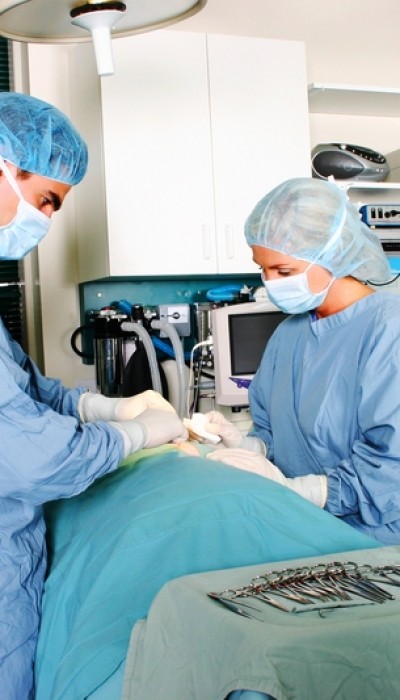Senior Pet Care
THE NEED FOR SENIOR PET CARE
Senior dogs and cats are going to require much more senior pet care than their younger brethren. General organ function, chronic diseases, dental disease and cancer start to creep up in an animals golden years so more medical attention is required. Please take the time to learn more about Senior Pet Medical Conditions.
Because of that greater need for senior pet care, owners worry about when that care could be needed. Now a days a lot of couples work outside the home. This often leaves the animal home by itself for many hours at a time. In most medical offices, calls come in right after 5 stating that their pet is ill, in heat stroke, diarrhea all over the place and so on. We take care of all those cases but it would be a great idea, if possible, if the owner or a neighbor could check in on the senior pet to make sure it is okay and has a fresh source of water. When it comes to senior pet care, time really is of the essence. This is why there are lots of owners that drop off their senior at their veterinarians office for daily dog care. That is wonderful because the staff can observe and treat something if it suddenly comes up. It is not cheap but brings peace of mind.
WHAT SHOULD BE DONE?
The plan for an overall healthy senior dog or cat is pretty straightforward. The care is basic but more basic care is needed as the animal gets older. Physical exams should be done at least 2-3 times per year. When discussing Senior Pet Aging, it was noted that physical changes occur much more rapidly in dogs and cats because they age much quicker than humans.
Senior pets develop arthritis in their hips at one time or the other. Senior pet care is required to radiograph the hips at least once a year to check the status of the hip joint plus any diskospondylosis that might be occurring in the lumbar area. Even if films are normal, veterinarians often will prescribe glucosamine/chondroitin for the pet which helps rebuild articular cartilage if started early enough.
This is one of the reasons why blood work should be done on the senior pet at least twice a year; maybe even more often for diagnosing endocrine disorders such as Cushing’s Syndrome (hyperadrenalcorticism), hypothyroidism or hyperthyroidism in the cat. Blood work that is over one year of age is basically out of date for even young pets let alone senior dogs & cats. Those profiles should include a routine CBC and Chemistry. Add thyroid testing (T4, FT4), adrenal gland test (ACTH Stim Test) and a heart workup to the CBC and Chemistry Profile.
In addition to the basic screening tests mentioned above, all cats 10 years of age and older should be checked twice a year for hyperthyroid disease (T4, FT4). Cats also try to fake out veterinarians and this disease is no exception. Many cats will have every clinical sign in the book pointing to excess thyroid function but the thyroid levels are normal! We all start to say….”If it looks like a duck…quacks like a duck….” Here we have to prove it chemically before we can call it a duck! If it is normal the first time, wait a month or so and retest. Nine times out of ten, it will be elevated. This is what happens in the cat.
A urinalysis should be completed plus a UPC ratioThis stands for Urine Protein Creatinine Ratio. This ratio will indicate whether there is any renal parenchymal (tissue) damage to the kidney itself. Just think of a drain in a sink. If it clogs up, water backs up. This is what happens in the kidney. If the backing up occurs in the kidney the pet will become uremic. The clogging up is usually caused by immune complexes. Treatment is with benazepril which increases blood flow, via dilation of the renal artery, to the kidney. should be determined for any kidney filtration problems (glomerulonephritis). A urinalysis is crucial since the kidney secretes not only normal protein wastes but also excessive components that don’t belong there in the first place. Finding them, helps point the veterinarian in the right direction. As we all know, those abnormal components came from somewhere.
YOU WANT ME TO COLLECT A URINE SAMPLE!
When I ask clients to bring in a urine sample I almost always get this look of….”You want me to do WHAT!” It was like asking them to part the Red Sea. It is much easier for the owner to collect the sample in a clean container. If a sample is not brought in, a technician has to walk the dog and it is already nervous plus it is around different smells and won’t go. What I have to do next is cystocentesis; which is a painless ultrasound needle guided procedure that directs me right to the bladder. The needle penetrates the bladder and I get my sample. The same thing can be done for cats.
To collect a urine sample from the dog, it is easier to take the animal out on a leash first thing in the morning when the bladder is full. Use a small plate or a flat plastic tub and stick it under her when she squats. Some dogs are a little nervous about what you are trying to accomplish but after a few tries, you will have your sample. Most older males will squat because it hurts to hike their leg. Do the same as for the female. If he hikes his leg, do your best to get a stream that is angling down to the ground.
To collect a urine sample from the cat use a little cat litter or packing peanuts and put it in a corner. Elevate that end of the box about one inch using newspapers or what is handy. Do not change the position of the box. When the cat urinates it will flow by gravity down to the bottom end of the box. Collect it with an old dropper or syringe. It may have a little litter in it but that won’t make any difference in the results. A much easier solution is to purchase Kit4Cat®. This is a hydrophopic sand product that keeps the cat urine on the surface of the product where it can be collected with an eyedropper. It is a slick product! Good luck!


